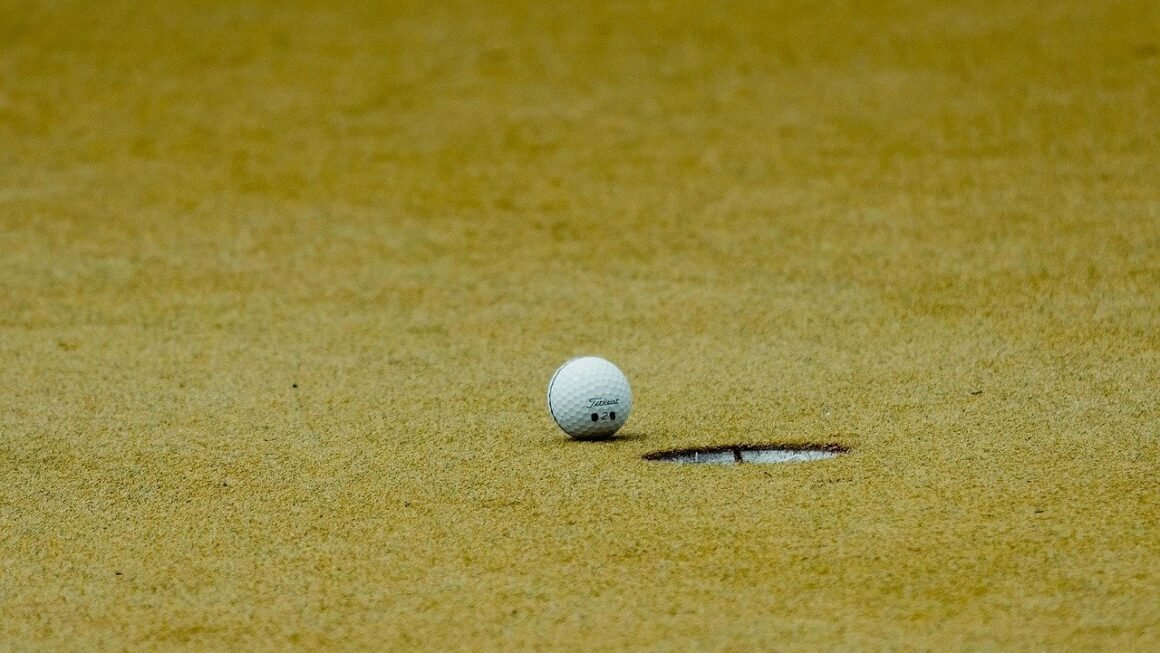The satisfying thwack of a perfectly hit forehand, the strategic dance across the baseline, and the electrifying tension of a championship point – tennis captivates millions around the globe. More than just a sport, tennis is a blend of athleticism, mental fortitude, and strategic thinking. Whether you’re a seasoned player, a curious beginner, or simply a fan of the game, this comprehensive guide will explore the fascinating world of tennis, covering everything from its origins to modern techniques and equipment.
The Origins and Evolution of Tennis
A Royal Beginning: Lawn Tennis History
Tennis, as we know it today, evolved from a 12th-century French game called “jeu de paume” (“game of the palm”). This early form was played with the hand, eventually transitioning to the use of gloves and then rackets. In the 1870s, Major Walter Clopton Wingfield patented a game he called “Sphairistiké,” which is widely considered the precursor to modern lawn tennis. This game quickly gained popularity in England and spread internationally.
Key Milestones in Tennis History
- 1877: The first Wimbledon Championships are held, establishing the rules and format that continue to shape the sport.
- 1881: The United States National Lawn Tennis Association (USNLTA), now the USTA, is founded.
- 1913: The International Lawn Tennis Federation (ILTF), now the ITF, is established to standardize rules and oversee international competitions.
- 1968: The Open Era begins, allowing professional players to compete in Grand Slam tournaments alongside amateurs.
- Modern Era: Constant advancements in racket technology and training methods continue to evolve the game.
Impact of Major Tournaments
The four Grand Slam tournaments – Wimbledon, the US Open, the Australian Open, and the French Open – are the most prestigious events in tennis. Winning a Grand Slam is considered the pinnacle of achievement in the sport. These tournaments draw huge crowds and global television audiences, significantly impacting the popularity and growth of tennis.
Essential Tennis Equipment
Choosing the Right Racket
Selecting the right racket is crucial for players of all levels. Factors to consider include:
- Head Size: Larger head sizes offer a bigger sweet spot, providing more power and forgiveness, ideal for beginners. Smaller head sizes offer more control and precision, preferred by advanced players. Example: A beginner might choose a racket with a head size of 105 sq. in., while an advanced player might opt for a 98 sq. in. head.
- Weight: Lighter rackets are easier to swing and maneuver, suitable for beginners and players with slower swing speeds. Heavier rackets provide more power and stability but require more strength. Example: A light racket weighs around 9-10 ounces (unstrung), while a heavier racket weighs 11-12 ounces.
- Grip Size: The correct grip size is essential for comfort and preventing injuries. To determine your grip size, measure the distance from the bottom lateral crease of your palm to the tip of your ring finger.
- Balance: Head-light rackets are easier to maneuver, while head-heavy rackets provide more power.
Tennis Balls: Types and Durability
Tennis balls come in different types, each suited for specific court surfaces and playing conditions.
- Regular Duty Balls: Ideal for indoor courts and clay courts. They have a softer felt that doesn’t fluff up as easily.
- Extra Duty Balls: Designed for hard courts and outdoor play. They have a thicker felt for increased durability.
- High Altitude Balls: Pressurized to perform better in higher altitudes where regular balls tend to fly faster.
- Pressureless Balls: These balls do not rely on internal pressure and are extremely durable, making them a cost-effective option for practice.
Example: Use extra duty balls on a hard outdoor court to ensure they last longer.
Tennis Shoes: Support and Traction
Tennis shoes are designed to provide the necessary support and traction for the quick movements and changes in direction required on the court.
- Hard Court Shoes: Offer durability and cushioning for the pounding of hard surfaces.
- Clay Court Shoes: Feature a herringbone pattern on the sole for optimal grip and to prevent clay from building up.
- All-Court Shoes: Versatile option suitable for various court surfaces.
Mastering Basic Tennis Strokes
The Forehand: Power and Technique
The forehand is one of the most fundamental strokes in tennis. A proper forehand involves:
- Grip: The eastern or semi-western grip are commonly used.
- Stance: Prepare early with a sideways stance, turning your shoulders.
- Backswing: Take the racket back low and behind you, creating a loop.
- Contact Point: Contact the ball in front of your body, extending your arm.
- Follow-Through: Follow through towards your target, finishing high.
Example: Practice hitting forehands against a wall, focusing on maintaining a consistent contact point and follow-through.
The Backhand: Stability and Control
The backhand can be hit with one or two hands.
- One-Handed Backhand: Provides more reach and slice potential, but requires more strength and stability.
- Two-Handed Backhand: Offers more stability and control, making it easier to generate power.
Key elements of a good backhand include:
- Grip: Continental or eastern backhand grip (one-handed); semi-western grip (two-handed).
- Stance: Similar to the forehand, prepare with a sideways stance.
- Backswing: Bring the racket back, keeping your wrist firm.
- Contact Point: Contact the ball in front of your body, maintaining a stable base.
- Follow-Through: Follow through towards your target, finishing high.
Example: Focus on keeping your wrist stable and using your core to generate power on your backhand.
The Serve: Starting the Point
The serve is the most important stroke in tennis, as it starts every point.
- Stance: Stand sideways to the baseline, with your feet shoulder-width apart.
- Grip: Continental grip is commonly used.
- Toss: Toss the ball slightly in front of you, at a comfortable height.
- Swing: Coordinate your swing, bringing the racket back and up in a smooth motion.
- Contact: Contact the ball at the highest point, snapping your wrist for added power and spin.
- Follow-Through: Follow through towards your target, landing inside the court.
Example: Practice your serve by focusing on a consistent toss and smooth swing.
The Volley: Net Play
The volley is a shot hit before the ball bounces, typically near the net.
- Grip: Continental grip.
- Stance: Ready position, with feet shoulder-width apart.
- Footwork: Move quickly towards the net, splitting your feet as your opponent hits the ball.
- Swing: Short, compact swing, blocking the ball back over the net.
- Follow-Through: Minimal follow-through, focusing on control and placement.
Example: Practice volleys with a partner, focusing on quick reactions and short, controlled swings.
Tennis Strategy and Tactics
Singles Strategy: Dictating Play
In singles, the goal is to control the court and dictate the pace of the match.
- Aggressive Baseline Play: Hitting deep, powerful groundstrokes to push your opponent back.
- Net Play: Approaching the net to finish points with volleys.
- Varying Spin and Pace: Mixing up your shots to disrupt your opponent’s rhythm.
- Targeting Weaknesses: Identifying and exploiting your opponent’s weaker shots.
- Court Positioning: Staying balanced and ready to move to any part of the court.
Example: If your opponent struggles with high balls, use topspin to force them into uncomfortable positions.
Doubles Strategy: Teamwork and Positioning
Doubles requires effective communication and teamwork.
- Communication: Clearly communicate with your partner about positioning and strategy.
- Poaching: Anticipating your opponent’s shots and intercepting them at the net.
- Serving and Returning: Strategically serving and returning to create opportunities for your team.
- Court Coverage: Coordinating court coverage to prevent gaps and minimize weaknesses.
- I-Formation: A common formation where the server’s partner stands at the net, ready to poach.
Example: Practice serving and volleying with your partner to improve your net play and coordination.
Mental Toughness: The Inner Game
Mental toughness is crucial for success in tennis.
- Staying Positive: Maintaining a positive attitude, even when facing adversity.
- Managing Pressure: Learning to perform under pressure and handle critical moments.
- Concentration: Staying focused on the present moment and avoiding distractions.
- Visualization: Mentally practicing shots and match situations to build confidence.
- Resilience: Bouncing back from mistakes and setbacks.
Example: Develop a pre-match routine to help you focus and manage your nerves before a match.
Conclusion
Tennis is a sport that offers a lifetime of enjoyment and challenges. From its rich history and evolution to the complex strategies and techniques, there’s always something new to learn and master. By understanding the fundamentals of equipment, strokes, and strategy, and by cultivating mental toughness, players of all levels can improve their game and fully appreciate the beauty and complexity of tennis. Whether you’re aiming to compete at a high level or simply enjoy a friendly match, the world of tennis awaits with open arms.



